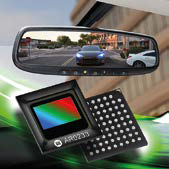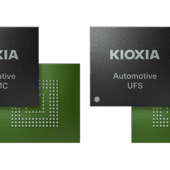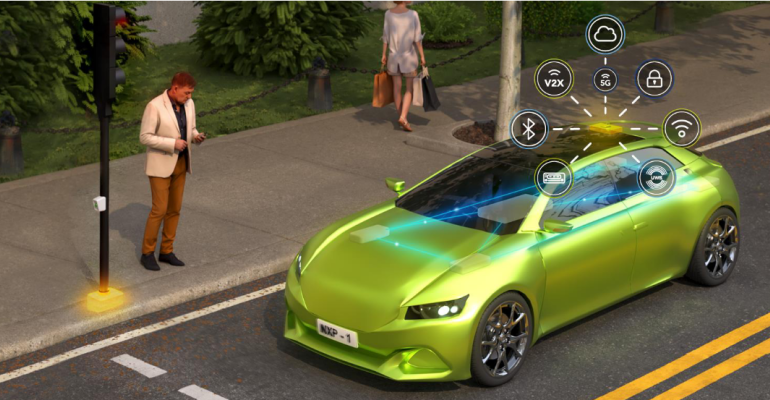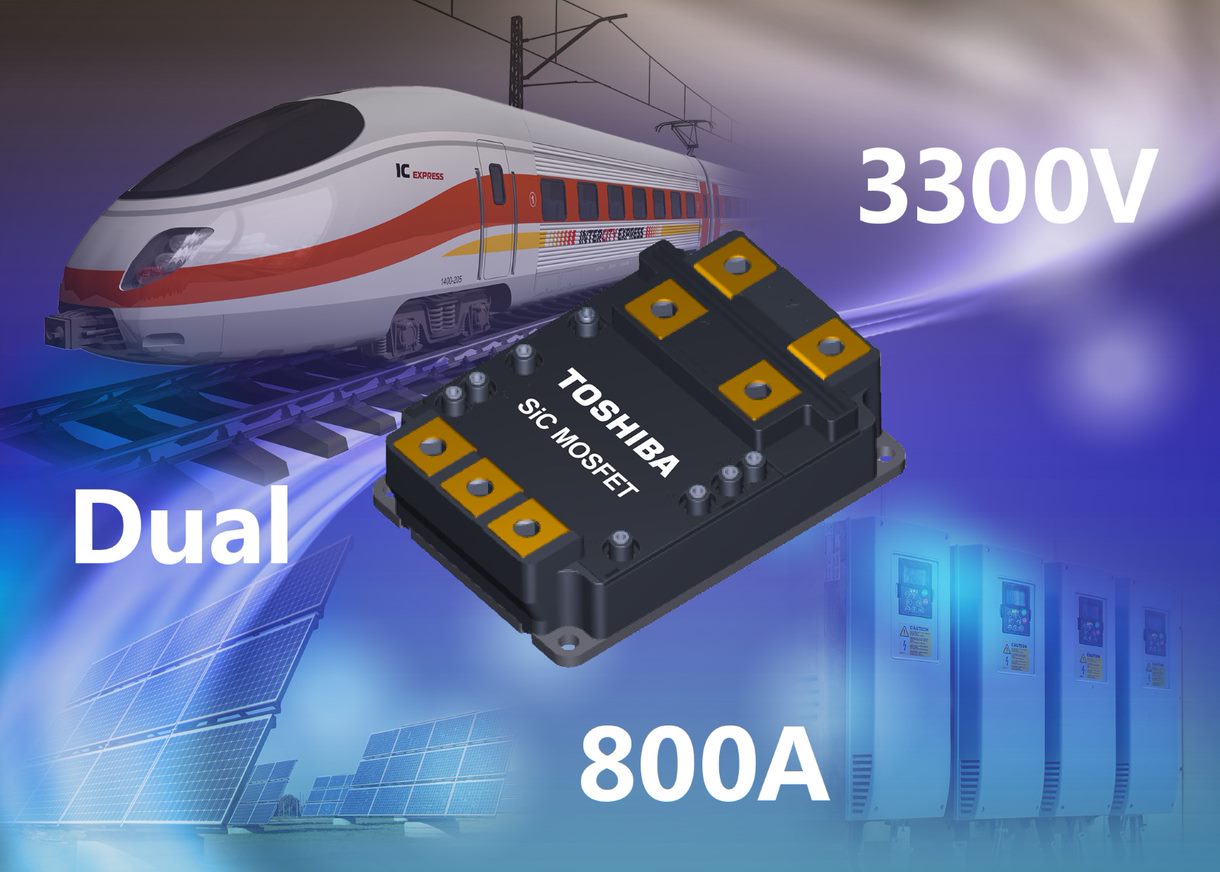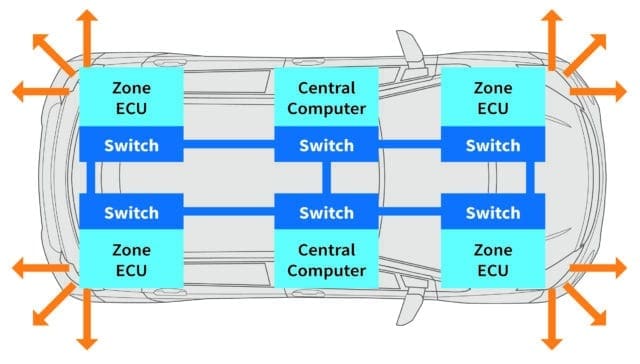
By Klaus Neuenhueskes, Senior Director of Semiconductor Marketing, Toshiba Electronics Europe GmbH
Introduction
With the introduction of increasingly intelligent advanced safety systems, and with plans to offer autonomous driving functions in the near future, the automotive industry is making significant changes to electrical/electronic (E/E) architecture. The LiDAR, radar and camera sensors on which these systems are based generate significant volumes of data that must be transmitted to powerful central computing systems for evaluation. That's why automotive engineering teams are turning to network technology that, until recently, was more common in the office.
As a result, in-vehicle networks are moving to a new architecture that takes advantage of the ubiquity and performance of Ethernet, yet is tailored to automotive needs. It provides high bandwidth and new standards that offer defined quality of service (QoS) and known packet delivery latencies. As a result, vehicles can now feature High Performance Computer (HPC) and zone controllers based on powerful multi-core System-on-Chip (SoC) processors. And while the semiconductor industry has responded with a wide selection of suitable SoCs, automotive engineers are having a hard time ensuring there is enough connectivity to implement the platforms they have in mind.
The growing loom of cables
The decentralized approach to vehicle electrical architecture is no longer adequate. Today, the wiring harness is the third heaviest and most expensive component in the modern vehicle. As features are added to a platform, whether to provide a facelift or to comply with new regulations, new cabling is often added to support additional communication technologies. The reversing camera is a good example. To resolve the vehicle's blind spot when reversing, a rear-mounted camera sends images to the natural output interface, the vehicle's infotainment (IVI) display. This entails adding more cabling and connectors to support high-bandwidth signaling. Also, with the camera being at the rear and the IVI unit closer to the front of the vehicle, a considerable length of wiring is required..
To address these challenges, progress is being made towards a zonal architecture (figure 1). Each vehicle has a maximum of two HPCs (one of which is system backup) connected in a ring network with several powerful zone ECUs. The selected communication technology is Automotive Ethernet, which provides superior backbone data rates of between 1 Gb/s and 10 Gb/s. With this approach, features such as Adaptive Driving Beam (ADB) no longer require a dedicated ECU. Instead, the function is assigned to an HPC or a zone ECU. And, over the life of the vehicle, it could be relocated as the vehicle balances the performance requirements of software updates and new installed features.
Any input the feature requires is acquired from network-connected sensors, such as steering wheel angle or camera, and outputs to actuators, such as LED headlights, are handled in the same way. With this approach, most local stripped down ECUs are within a short distance of a zone ECU or HPC. This reduces the weight and complexity of the wiring harness and makes it easier to add additional hardware during retrofits to support new model vehicle features.
Ethernet that meets automotive needs
Ethernet has provided decades of reliable service for IT systems, ensuring that the data sent reaches its destination. However, end-to-end synchronization and synchronization between network nodes in automotive applications are just as important as reliable delivery. And, as already highlighted, weight is another matter, so there's no place for traditional Ethernet cables. Instead, an unshielded twisted pair (UTP) cable (T1) is specified, used in a point-to-point topology. To meet the stringent EMC requirements of the automotive industry, a specific physical layer has also been defined to support data rates between 10 Mb/s and 10 Gb/s.
To ensure timely delivery of data, new standards have been developed. They are divided into two groups: Audio Video Bridging (AVB) and Time Sensitive Networking (TSN). Together, they are used to secure bandwidth for time-sensitive packets, perform node synchronization, and prevent interruption of audio and video data.
In the case of AVB, there are new standards such as IEEE 802.1Qav to manage queuing and forwarding, ensuring that surges of data do not disrupt time-sensitive data (TSN). IEEE 802.1Qat covers end-to-end flow reservation to provide quality of service (QoS). In addition, there are mechanisms to synchronize data from the main node (IEEE 802.1AS) and packets that compensate for delays at the worst time (IEEE 1722).
Thanks to the TSN standards, Ethernet can also be used for closed-loop control. These range from low latency packet support (IEEE 802.1Qbv) and latency reduction (IEEE 802.1Qbr) to Layer 2 trial and error methodologies (IEEE 802.1Qbu). Energy efficiency is another aspect of interest for the new E/E architecture. Energy Efficient Ethernet (EEE) allows a node to be put on standby when no data is passing through the network (IEEE 802.3az).

The SoC connectivity bottleneck
Despite their incredible processing performance, SoCs often lack the connectivity needed to implement automotive Ethernet-based HPCs, zonal ECUs, telematics platforms, or IVIs. Due to the topologies used, ECUs typically require two or more automotive Ethernet ports, while SoCs typically offer only one. The same goes for the PCIe interface, where many of today's wireless modules and storage media plug in.
To solve this problem, Toshiba has developed its third generation automotive interface bridge. The TC9563XBG integrates a switched PCIe Gen 3 interface along with a dual TSN MAC Ethernet interface in a compact 10mm × 10mm PBGA package with 0,65mm ball pitch (Figure 2).
The integrated PCIe switch offers one port up to the host SoC and three ports down. Two of them are for external devices, such as wireless modules or NVMe storage, while the last port connects internally to Ethernet MAC ports and peripherals. There are two modes of operation that support different data rate settings (Figure 3).

Figure 3: The TC9563XBG PCIe switch offers two different configurations to meet different application data rate requirements.
Two AVB/TSN-capable Ethernet peripherals provide automotive Ethernet connectivity. Along with the PCIe interface, they support SR-IOV (Single Root I/O Virtualization) with up to six Virtual Functions (VFs), three for each port. In this way, application developers can support virtualized operating systems. They can also select the Media Independent Interface (MII) that best suits their solution needs, from RGMII and SGMII to XFI and USXGMII (port dependent).
The TC9563XBG offers 46KB of memory to support eight full-duplex queues, while the GPIO pins can be configured to capture gPTP timestamps or generate pulse trains upon receipt. Through the combination of peripheral hardware and software, the standards for AVB and TSN are supported. The registers of this automotive interface bridge are configured through the PCIe interface by the SoC host. If required, additional firmware for the embedded Arm® Cortex®-M3 processor can be downloaded into the available 128KB of SRAM, allowing additional functionality to be added or supporting interfaces such as SPI, I2C and UART.
Creation of zonal HPCs and telematic controllers
For HPCs, the TC9563XBG connects to the host SoC via PCIe, providing up to 10 Gb/s automotive Ethernet connectivity (Figure 4). Thus, NVMe storage or additional end devices can be accommodated through additional PCIe ports. Telematics units have slightly different requirements. They may only need one of the available automotive Ethernet ports, but instead make more use of the additional PCIe ports. This is due to the increasing use of this interface technology for highly integrated wireless modules for 5G connectivity, vehicle-to-vehicle (V2V) communication, and Bluetooth and Wi-Fi combo devices.
How to resolve limited connectivity in zonal architectures
It is clear that for ADAS and autonomous driving functions to meet the increasing expectations of consumers, more in-vehicle bandwidth is needed to support the new E/E architectures. Thanks to the significant work done by standardization groups, automotive Ethernet meets these requirements. Now that it has been selected as the interface for the automotive data backbone, the next challenge is to find properly supported hardware and troubleshoot the limited PCIe and Ethernet connectivity in today's SoCs. Toshiba's TC9563XBG offers an optimized solution for the needs of telematics units, zone ECUs, and IVI systems that is easy to integrate, complies with relevant standards, and meets the stringent demands of the automotive industry.




